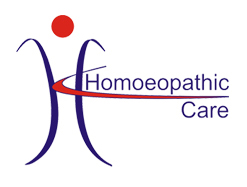Your Homeopath In Kerala
FEMALE DISORDERS
ENDOMETRIOSIS
What is endometriosis?
The presence of functioning endometrium (glands and stroma) in sites other than uterine mucosa is called endometriosis. It is not a neoplastic condition, although malignant transformation is possible.
Types of Endometriosis
ENDOMETRIOSIS EXTERNA OR GENERALLY REFERRED TO AS ENDOMETRIOSIS
Types of Endometriosis
CLINICAL FEATURES
COMPLICATIONS OF ENDOMETRIOSIS

HOMOEOPATHIC MANAGEMENT
Homoeopathy has a good role in treating female complaints. There are wide sets of homoeopathic medicines which help the patient to overcome the severe bleeding and pain during the menses.In this condition of endometriosis there will be thickening of the uterus so, homoeopathic medicines will be acting on the uterus and will be helpful in reducing the thickness of uterus. Homoeopathic medicines also help to build up immunity and thus preventing recurrent bouts of infection.
FIBROID
Fibroids Are The Commonest Benign [Non-Cancerous] Solid Tumors In Female. 20% Of Women At The Age Of 30 Have Got Fibroid In Their Wombs. The Prevalence Is Higher Between 35-45 Yrs.
Risk factors
TYPES OF FIBROIDS BASED ON LOCATION
Body-fibroids are most commonly located in the uterus and are usually multiple
Cervical-anterior
Cervical-anterior
Central
SYMPTOMS OF FIBROID UTERUS
Asymptomatic- majority of cases
COMPLICATIONS OF FIBROIDS
Degenerations

HOMOEOPATHIC MANAGEMENT
Homoeopathy is a holistic system. In conditions like fibroid uterus initial ultrasound scanning is advised to the patient and further medicines will be given to reduce the size of the fibroid uterus and medicines are given for pain and bleeding. These medicines don’t have any side effects and are very safe. The homoeopathic medicines will help in increasing the immunity of the patient.
DYSMENORRHOEA [PAINFUL MENSES]
Dysmenorrhea Means Painful Menstruation To Incapacitate Day-To -Day Activities
TYPES OF DYSMENORRHOEA
SECONDARY DYSMENORRHOEA
PRIMARY DYSMENORRHOEA
PRIMARY DYSMENORRHOEA
Abnormal anatomical and functional aspect of uterus
- Unequal development of mullerian duct, such as septate or bicornuate uterus
- Uterine hypoplasia
Imbalance in the autonomic nervous control of uterine muscles
CINICAL FEATURES
SECONDARY DYSMENORRHOEA
CAUSES OF PAIN
CLINICAL FEATURES
MEMBRANEOUS DYSMENORRHOEA
OVARIAN DYSMENORRHOEA

HOMOEOPATHIC MANAGEMENT
Homoeopathic system has got wide varieties of medicines for dysmenorrhoea; the severity of pain will differ from patient to patient in this system of medicine the importance is given to the patient and their sufferings. Initially a detail investigation is advised for the patient and the cause of pain is found out and the treatment will be based on it. These medicines are very safe and do not have any side effects. Usually two sets of medicines are given, one acute to take during the periods to control and decrease pain and associated complaints and the second regular medicine which is given to reduce the pain, correct the underlying disease condition and in turn reduce the pain for forthcoming periods.
POLYCYSTIC OVARIAN SYNDROME
Polycystic ovarian syndrome was originally described in 1935 by stein and eventual as a syndrome manifested by amenorrhea [absent menses], hirsutism [excessive hair growth on face and other parts of body], obesity associated with enlarged polycystic ovaries.
This heterogeneous disorder is characterized by excessive androgen [testosteron] production by the ovaries mainly, which interferes with the reproductive, endocrine and metabolic functions.PCOS is a multifactorial and polygenic condition
SYMPTOMS
Lichen planus occurs when the immune system attacks cells of skin or mucous membrane, but the exact cause is not known. The condition is not contagious.
INVESTIGATIONS
Sonography
Serum values

HOMOEOPATHIC MANAGEMENT
PCOS is very common disease seen now adays. The medicines given will help the patient in attain their regular menses and the patient should follow the strict diet and exercise advised by the physician. Initial scanning will be advised for the patient and a regular monitoring is done in every 4 months. Homoeopathic medicine will help u in regularizing the menses and correcting the polycystic ovaries.
MENORRHAGIA
It Is Defined As Cyclic Bleeding At Normal Intervals, The Bleeding Is Either Excessive In Amount (>80ml) Or Duration Or Both.
CAUSES
Menorrhagia is a symptom of some underlying pathology
ORGANIC CAUSES
Systemic
Endocrinal
Blood dyscrasias
Von willebrands disease
FUNCTIONAL CAUSE
Dysfunctional uterine bleeding
Fibroid uterus

HOMOEOPATHIC MANAGEMENT
Homoeopathic system is a holistic system. The medicines given will help in reducing the pain and reduce the bleeding. Once when the medicines act on the body it will reduce the uterine bleeding. These medicines will help in improving the immunity of the patient and correct the diseased uterus. These medicines are very safe and do not have any side effects.
LEUCORRHOEA
It Is Defined As An Excessive Normal Vaginal Discharge.
The term leucorrhoea should fulfill the following criteria
CAUSES
PHYSIOLOGIC EXCESS
CERVICAL CAUSE
VAGINAL CAUSE
DIAGNOSIS

HOMOEOPATHIC MANAGEMENT
Homoeopathy has good role in treatment of cases like leucorrhoea. There are wide set of homoeopathic medicines which help in overcome the back pain and irritation during the time of discharge. Homoeopathic medicines may help to remove leucorrhoea and allow the patient to lead a normal life. Homoeopathic medicines have action on the uterus which reduces the excess mucus production. Homoeopathic medicine help to build up immunity and thus preventing the recurrence of the disease.effects.

Experience a Healthier Life
With Your Homeopath in Kerala
CALL NOW TO BOOK YOUR APPOINTMENT
Your Homeopath Kerala
Restore Your Health Naturally With Homeopathy.
Safe, No Side Effects
Homeopathic Specialist
BHMS, MD(Hom)
Treating Patients Successfully For 26 Years Naturally

Make An Appointment
Clinic Locations
Indian Clinic
TC 20/916, Karamana,
Trivandrum-695002, Kerala
Adelaide Clinic
Adv. Dip. Homeopathy
33 Jenkins Ave, Rostrevor SA 5073
Adelaide, South Australia
